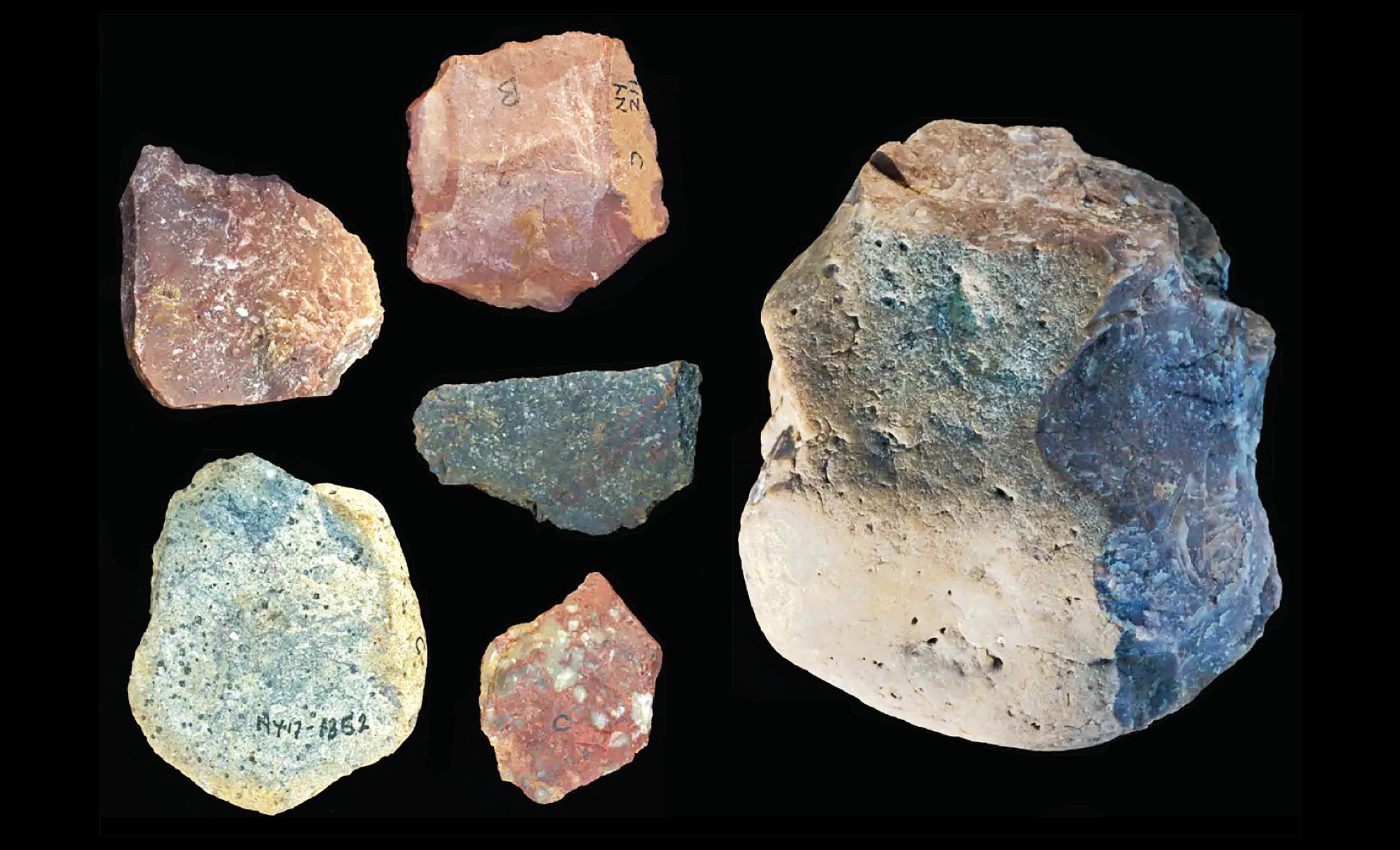
Stone tool 'technology' used by early humans advanced at an incredibly slow pace
A newly analyzed site in northern Kenya is reshaping the story of early human technology. An international team reports more than 1,200 stone tools from three stacked layers that span roughly 300,000 years – from 2.75 to 2.44 million years ago.
The study’s central message is simple yet striking. Even as floodplains turned to grasslands and back again, early hominins stayed consistent – choosing the same materials, shaping them in the same way, and relying on a proven design.
Layers of tools and time
At a site called Namorotukunan, on the northeast side of Lake Turkana, researchers recovered more than 1,200 artifacts from three layers that capture different habitats.
The tools match the Oldowan, a simple method of striking sharp flakes from stone cores, and they look strikingly similar across all three layers.
The work was led by David R. Braun, an anthropologist at George Washington University (GWU) and the Max Planck Institute. His research focuses on how early stone technology tracks human ecological change.
Toolmakers showed consistent choices about raw materials and technique. They favored chalcedony, a tough, fine-grained, silica-rich rock that fractures cleanly and gives crisp edges.
The assemblages are rich in flakes and small cores, and in some levels, between 79 and 94 percent of pieces are sharp-edged fragments. Some bones dated to about 2.58 million years show cut marks that link these edges to butchery.
Dating the ancient record
The team pinned ages with multiple lines of evidence, not just one. They used paleomagnetism, a dating method that reads past flips of Earth’s magnetic field in rocks, to anchor the sequence with known reversals.
They also drew on pedogenic carbonates, small soil nodules that preserve ancient carbon signatures, to track shifts in vegetation that line up with the dated layers.
“Put simply, these signals tell us whether there were grasses or whether there were trees,” explained Amelia Villaseñor, an associate professor of anthropology at the University of Arkansas.
Microscopic plant silica, known as phytoliths, added independent checks on habitat. Taken together, the proxies show a swing toward more open, seasonally dry settings, while the tool style stayed steady.
Tools built for human survival
Sharp flakes are not ornaments. They cut hide, tendon, and meat fast, and they crack into marrow-rich bones.
“This study, linking a simple tool kit to human ingenuity, reminds us that our ancestors have successfully confronted and survived environmental challenges,” said Villaseñor.
Cut marked fossils at the site tie flakes to animal tissue, which suggests a dietary shift toward high-value foods during dry spells.
Early steps in innovation
Oldowan technology shows up at several early sites in eastern Africa. The Nyayanga site in western Kenya preserves Oldowan tools between about 3.0 and 2.6 million years old. This finding pushes the earliest known range back in time and expands who might have used them.
An even older toolkit from Lomekwi, at about 3.3 million years, looks different, larger, and more percussive. That report points to a stage before systematic flake production took off.
Namorotukunan slots into this timeline near the dawn of Oldowan. It shows the technique was not a brief experiment, it was a habit that lasted through tough swings in water and vegetation.
Shifting climates, steady craft
Across East Africa, vegetation records show a broader tilt toward grasses during this window. Geochemical records document increasing C4 plants in the Turkana region through the late Pliocene, consistent with drier, more open landscapes.
Global forces may have nudged regional rainfall patterns. The final closure of the Isthmus of Panama is a well-studied event that altered ocean circulation. It likely shifted wind and rain belts, amplifying seasonal dryness in parts of Africa.
In that setting, rivers became lifelines for water, cobbles, and carcasses. Toolmakers returned to these channels, picked raw materials on purpose, and left behind a layered record of the same craft over centuries upon centuries.
Old tools, timeless wisdom
The team reports deliberate selection for fine-grained stone close to river gravels, not random use of whatever lay around. That choice suggests an understanding of fracture mechanics and a repeatable routine.
“It reveals an extraordinary story of cultural continuity,” said Braun, referring to the long run of the same technique through changing times.
That stability may have been a survival strategy. Instead of chasing novelty, early humans doubled down on a versatile, reliable tools that helped them open carcasses and broaden their menu.
“We can survive whatever the future throws at us; we may just need to look into the ancient past,” said Villaseñor. Oldowan flakes are humble, but they are efficient, portable, and teachable.
The study is published in Nature Communications.
—–
Like what you read? Subscribe to our newsletter for engaging articles, exclusive content, and the latest updates.
Check us out on EarthSnap, a free app brought to you by Eric Ralls and Earth.com.
—–













